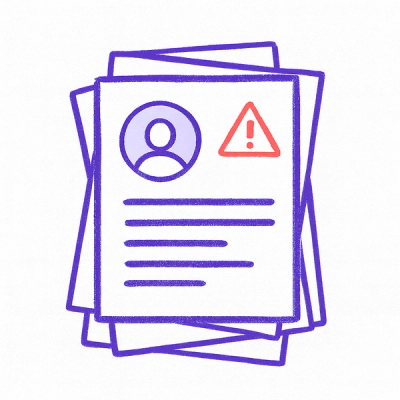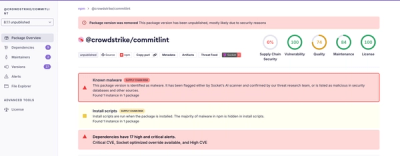
Research
Malicious fezbox npm Package Steals Browser Passwords from Cookies via Innovative QR Code Steganographic Technique
A malicious package uses a QR code as steganography in an innovative technique.
django-accounts-api
Advanced tools
Scenario to support is a compiled javascript capable frontend needing to provide authentication features over api
Caveat enptor, very early days, still being tested in its first project
pip install ... or equivalent'django_accounts_api', to INSTALLED_APPSpath('/accounts_api/', include('django_accounts_api.urls')) to your urlsSee docs...
Install Poetry https://python-poetry.org/docs/#installation
Use a virtual environment https://python-poetry.org/docs/basic-usage/#using-your-virtual-environment
poetry install --with dev --no-root installs dependencies for development
poetry run pre-commit install installs the pre-commit hooks
pytest runs tests
pipx install poetry and/or pipx upgrade poetryCreate a Pypi token perhaps at https://pypi.org/manage/account/token/ It should look like this
Create API token
Token for "django_accounts_api"
Permissions: Upload packages
Scope: Project "django-accounts-api"
pypi-<YOUR_KEY>
poetry config pypi-token.pypi pypi-<YOUR_KEY>
Bump the version number
Run poetry lock if requirements have changed
Run poetry build
Run poetry publish
To run tox you will need to make sure that the range of python versions required are available for tox to use.
Recommendation: use pyenv
pyenv install 3.7 3.8 3.9 3.10 3.11pyenv local 3.7 3.8 3.9 3.10 3.11toxcd docsmake htmlTODO: add to tox
TODO: add to tox
FAQs
Unknown package
We found that django-accounts-api demonstrated a healthy version release cadence and project activity because the last version was released less than a year ago. It has 3 open source maintainers collaborating on the project.
Did you know?

Socket for GitHub automatically highlights issues in each pull request and monitors the health of all your open source dependencies. Discover the contents of your packages and block harmful activity before you install or update your dependencies.

Research
A malicious package uses a QR code as steganography in an innovative technique.

Research
/Security News
Socket identified 80 fake candidates targeting engineering roles, including suspected North Korean operators, exposing the new reality of hiring as a security function.

Application Security
/Research
/Security News
Socket detected multiple compromised CrowdStrike npm packages, continuing the "Shai-Hulud" supply chain attack that has now impacted nearly 500 packages.